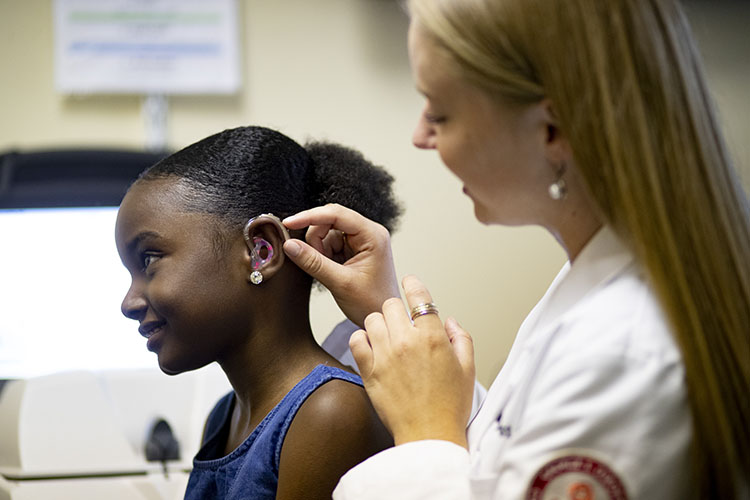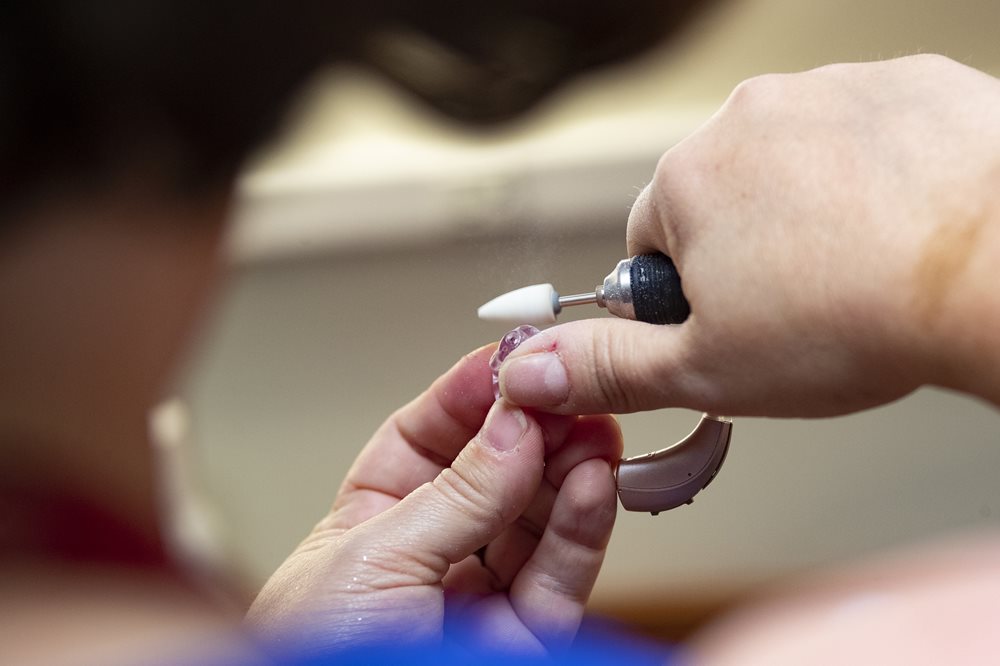Considering Hearing Aids – An Overview
 For the millions of Americans who have hearing loss, hearing aids are usually the best option to help correct untreated hearing loss and resume a high quality of life. While it can be hard to accept that you need hearing aids, going without them increases your risk for social and medical problems, including isolation, cognitive decline and depression. Many types and styles are available to suit every preference and lifestyle.
For the millions of Americans who have hearing loss, hearing aids are usually the best option to help correct untreated hearing loss and resume a high quality of life. While it can be hard to accept that you need hearing aids, going without them increases your risk for social and medical problems, including isolation, cognitive decline and depression. Many types and styles are available to suit every preference and lifestyle.
For people with mild-to-moderate hearing loss, standard hearing aids work best. "Power" models are often used for people who have severe-to-profound hearing loss. Hearing aids are typically recommended if your hearing test results show hearing loss across several pitches (or frequencies).
Hearing aids can be classified into two main groups: in-the-ear (ITE) styles and behind-the-ear (BTE) styles. Sizes range from virtually invisible to filling the entire bowl of the ear. Your hearing care professional will be a vital asset in helping you pick the best style for you.
Many of the hearing aids produced today use telecoils and wireless technology. Telecoils improve hearing in public settings, such as theaters and airports. Meanwhile, wireless technology allows two hearing aids (one on each ear) to communicate with each other and essentially operate together as one complete hearing system. It also means hearing aids can connect to external sources of sound that are transmitted wirelessly, such as via Bluetooth.
Once a hearing healthcare professional recommends hearing aids for you, a number of factors will be considered when selecting and fitting a device. The best fit for you will depend not only on the severity and type of hearing loss you have but also your budget, cosmetic preferences, career demands and other concerns.
Because hearing aids are personalized, not every brand, style or technology level of hearing aid is suited for everyone. Even two people with the same hearing loss may end up with different hearing aids based on other selection criteria. This can make comparing hearing aids difficult. It’s best to talk to your hearing healthcare provider about what options and features are ideal for you.
Because your new hearing aids may take some time to get used to, hearing healthcare professionals will perform an initial fitting where they fine-tune features and adjust levels to ensure you are receiving the most benefit from the devices. It is important to note there is an adjustment period when wearing new devices, and it takes time to get used to new hearing aids, even if you’ve worn some type of hearing aid for many years.
Attitude is the key to the hearing aid user's success. Hearing aid studies have shown that people who have a positive attitude do better with hearing aids. If you, as well as your spouse or family, approach your hearing aid fitting with a positive outlook, knowing that it may take some time to get used to the sounds you were missing, you will have a much better listening experience more quickly.
 Hearing aids are sometimes described as tiny computers for your ears. Because of the sophisticated technology and miniature size, hearing aid prices can range from less than $1,000 to as much as $4,000+ per ear for the very best technology. Features, size and level of personalization can all account for differences in cost.
Hearing aids are sometimes described as tiny computers for your ears. Because of the sophisticated technology and miniature size, hearing aid prices can range from less than $1,000 to as much as $4,000+ per ear for the very best technology. Features, size and level of personalization can all account for differences in cost.
Many adults pay out-of-pocket for hearing aids, because they're not routinely covered by medical insurance. For children, insurance is more likely to cover hearing aids. Check with your provider to find out what's available to you. Other options for paying for your hearing aids may include financing offered by your hearing care professional, credit from a third party like CareCredit, charitable organizations or help from family.
While many hearing healthcare professionals offer hearing device cleaning at no cost, it is a good habit to learn daily maintenance and cleaning to protect your investment. Many hearing aid problems can be easy to troubleshoot at home or with the help of your hearing care provider.
Hearing aids have small working parts, and it is not uncommon over time for a hearing aid to need a repair. You may try to turn the hearing aid on in the morning and find that there is no sound; the battery door may come unhinged. These things do happen, even when the hearing aids are properly cared for. If you should experience an issue that needs repair, take the hearing aid(s) to your hearing care professional. They are equipped to diagnose broken hearing aids. Some minor hearing aid repairs can be done in the office setting in a short period of time; others will need to be sent to the manufacturer for repair. Your hearing professional can help determine what kind of a repair is necessary if you feel your hearing aid is not working properly.
Hearing aids come with a warranty when purchased new. If your warranty has expired, it is still possible to repair most hearing aids with a small fee. Depending on the hearing aid manufacturer, this repair may come with a new year-long warranty. Your hearing professional will provide you with details when you take your hearing aid into the office.
If you have a question about your hearing aids or think you may need one, contact the Pennsylvania Ear Institute today for an appointment at 215.780.3180.